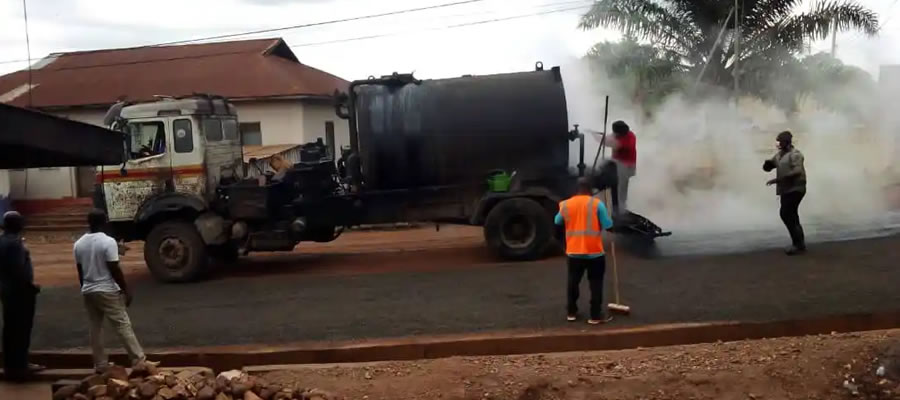

Location and size
West Gonja District is located to the west of Tamale, the Northern Regional capital of Ghana and it lays within longitude 10 51 and 20 581West and latitude 80 321 and 100 21North. It also shares boundaries to the south with Central Gonja District, Bole and Sawla-Tuna-Kalba Districts to the west, Wa East District to the north-west and North Gonja District to the east. The district has a total land area of 4715.9sqkm, part of which is occupied by the Mole National Park and Kenikeni Forest Reserves.
Relief and drainage
The topography is generally undulating with altitude between 150-200 meters above sea level. The only high land is the Damongo Escarpment located north of the district capital. The Mole River from the northern boundary joins the White Volta to the east of the district capital and joins the Black Volta around Tuluwe in the Central Gonja District. The White Volta forms the Eastern boundary of the district.
Climatic conditions
Temperatures are generally high with the maximum occurring in the dry season, between March/April and the lowest between December/January. The mean monthly temperature is 27?. The dry season is characterized by the Harmattan winds which are dry, dusty and cold in the morning and very hot at noon. Evaporation is very high causing soil moisture deficiency. Humidity is very low resulting in dry skin and cracked lips in humans especially within the Harmattan period. Rainfall is bimodal with the average annual precipitation being 1,144mm. The rainfall pattern is erratic, beginning in late April and ends in late October. The peak of rainfall is in June/July with prolonged dry spell in August. The rains are stormy and torrential up to 300mm per hour. Erosion and floods are common due to the torrential nature of the rains.
Vegetation
The natural vegetation is Guinea Savanna. The vegetative cover of the district is dictated by the soil types and human activities including shifting cultivation, slash and burn method of land preparation and illegal chain-saw operations. The major tree spices are shea, dawadawa, baobab, acacia, nim and some ebony. The trees are scattered except in the valleys where isolated woodland or forests are found. Most trees are deciduous, shedding their leaves during the dry season in order to conserve water.
Grass grows in tussocks and may reach a height of 2.7m during the rainy season. This indicates that the area is suitable for crops such as millet, sorghum, maize and groundnuts. The original vegetation in major settlements such as Damongo and Busunu has been destroyed by human activities.
Soil
The district is situated in an old geological area. The rocks are mainly of Voltaian gold. There are mudstones and sandstones in the Alluvial Damongo Formations. The extreme western part of Damongo is composed of granite material of low fertility. Rich alluvial sandy deposits occur around Damongo and the Kenikeni Forest Reserves. The soil around Kotito is said to be fertile and suitable for cereals, legumes and root crops including livestock production. Underground water potentials are limited due to the Voltaian Formation.
Date Created : 11/30/2017 7:37:53 AM










 facebook
facebook
 twitter
twitter
 Youtube
Youtube
 +233 593 831 280
+233 593 831 280 0800 430 430
0800 430 430 GPS: GE-231-4383
GPS: GE-231-4383 info@ghanadistricts.com
info@ghanadistricts.com Box GP1044, Accra, Ghana
Box GP1044, Accra, Ghana